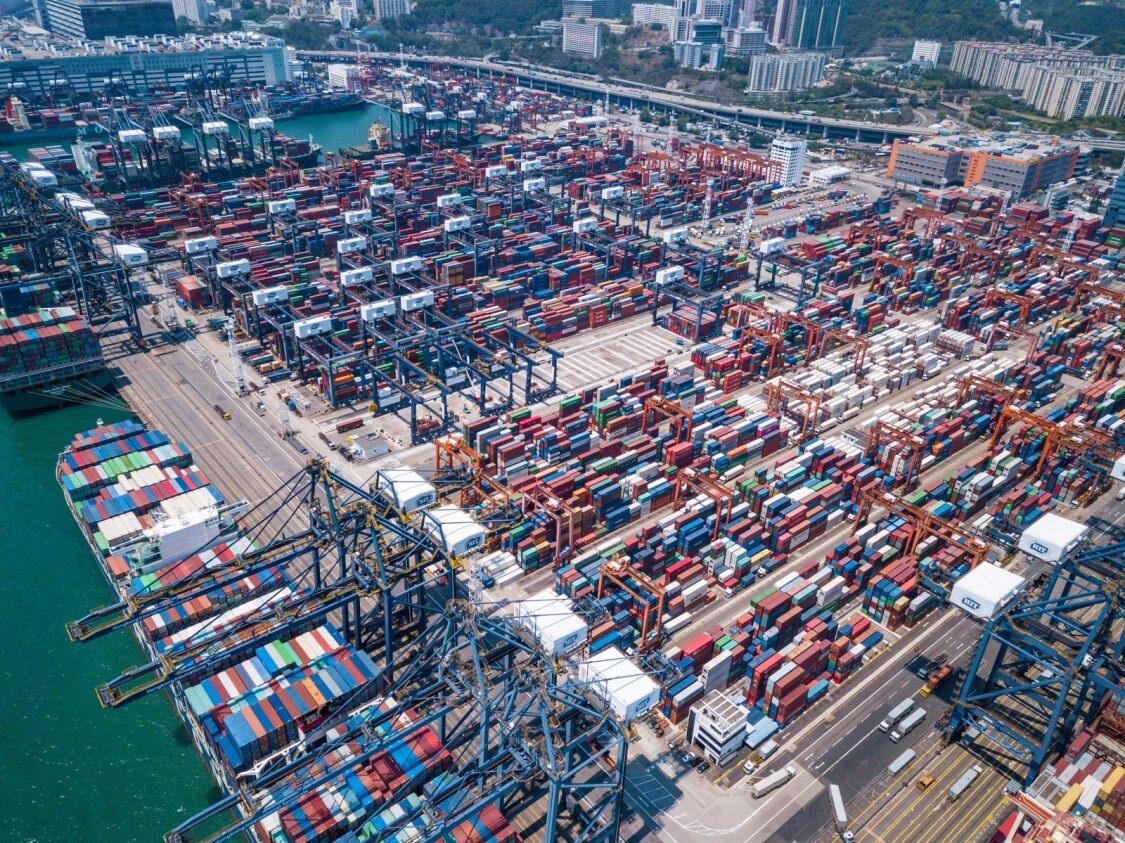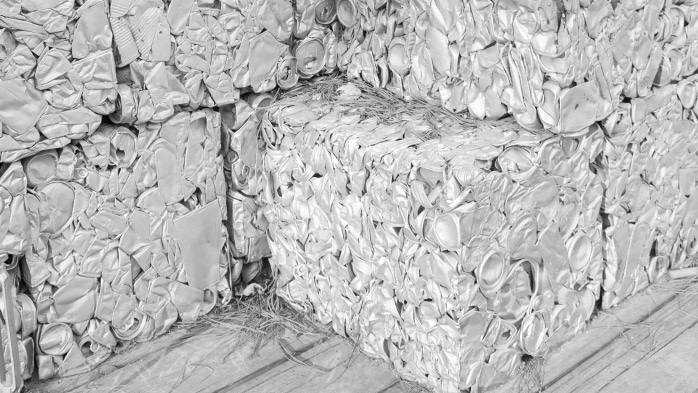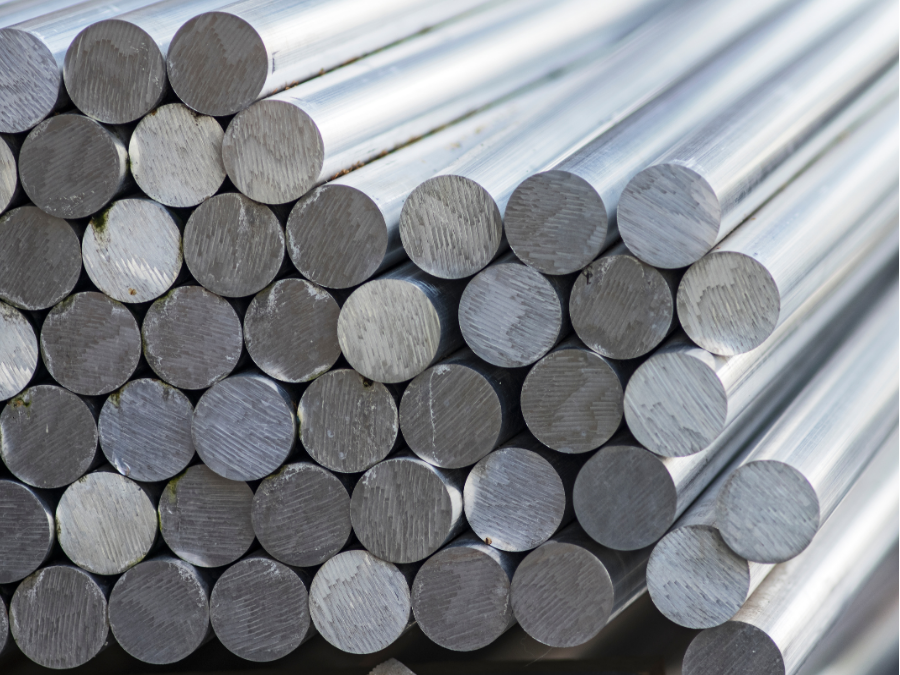Export Growth
April 17, 2025
Maritime tax maneuvers: Can port fees really bring U.S. shipbuilding back?
Written by Greg Wittbecker
By know you must have “tariff fatigue,” so we are shifting gears to focus the maritime tax proposals of the United States Trade Representative (USTR) plus some other lowkey tax relief bills that may have out-sized positive effects to sectors served by aluminum.
United States Trade Representative (USTR) port fee plans for Chinese ships
The USTR recently completed a year-long, Section 301 study on China shipbuilding and vessel ownership which pointed to China’s domination of the market, and as an extension, the risks to U.S. national security.
China built about 52% of all maritime vessels in 2023 (latest data year), launching about 32.8 million gross tons (GT). It was followed by South Korea at 18.3 million GT or 28% of the market, with Japan ranked 3rd at 9.9 million GT or 15%. The U.S. produces less than 1% of the GT delivered and virtually everything was defense related.
China now has the largest and most valuable fleet, valued at over $255 billion. Its bulk fleet is worth over $68.4 billion and its container fleet at $63.5 billion. China’s tanker fleet comprises over 1,764 vessels worth $47.9 billion.
China also builds over 90% of the world’s shipping containers.
The USTR report contained the following proposed fees:
- New fees on vessels operated by Chinese ship operators or built in China calling on U.S. ports to counter China’s dominance in the maritime sector and bolster U.S. shipping interests.
- The new proposal includes a $1 million per U.S. port call fee on Chinese vessel operators and a $1.5 million fee per U.S. port call for Chinese-built vessels. A service fee would be instituted on each U.S. port call by vessel operators, regardless of their nationality or vessel flag, with vessels on order from Chinese shipyards.
- The proposal also floated the potential phase-in of “commercial cargo preference,” under which a percentage of all U.S. ocean exports will be required to be carried in U.S.-flag vessels, starting at 1% and stepping up to 15% within seven years.
- These proposals were part of the broader vision by the Trump Administration to reinvigorate U.S. shipbuilding capabilities and grow the U.S.-flag fleet and U.S. maritime industry, while reducing China’s influence. These were laid out in the April 9th Executive Order “Restoring America’s Maritime Dominance”.
The Trump administration argued that fees would curb China’s growing commercial and military dominance on the high seas and promote the U.S. The USTR has proposed fees that could top $3 million per U.S. port call for China-domestic maritime industry.
Reaction from commercial interests was swift. Representatives from bulk commodity shippers such as grain and coal, were joined by consumer goods’ shipment in arguing against the fees, saying it cripple supply chains because of the very dominance that China has in the existing shipping fleet. They also pointed out the impracticality of revitalizing American very quickly without examining the root causes of why it went away in the first place.
USTR and the Administration are now backpedaling on the proposals.
Among the changes under consideration are delayed implementation and new fee structures designed to reduce the overall cost to visiting Chinese vessels.
Among options the Trump administration was considering is charging a fee that is adjusted based on the number of Chinese-built ships in a company’s fleet, one source said. That would mean lower fees for those companies with fewer ships built in China.
The administration was also mulling a charge based on the tonnage of unloaded vessels rather than a flat fee, two of the sources said. This would mean lower fees for smaller ships, rather than flat fees for all vessels. That might ease the burden on ship owners with smaller vessels involved in niche trades such as transporting grains or other commodities.
The USTR had formulated the fee proposal focusing on the big container ships and had failed to comprehend the effect on bulk commodities such as coal, grains and crude oil impact on commodities flows had not been fully considered, they said.
Some question if the fees are legal!
Leading maritime experts cite a 1998 ruling by the Supreme Court that the Harbor Maintenance Fee [Harbor Maintenance Tax – HMT] is indeed a tax and not a user fee and it is unconstitutional to apply it to exports. The same logic in that ruling would apply to this matter with the courts finding any fees charged to empty ships arriving at U.S. ports to carry American exports are illegal.”
Tariffs again to the rescue for competitively disadvantaged industry?
There have been volumes written by the lack of logic in connecting Section 232 to the rebuilding of U.S. primary aluminum capacity. In aluminum, it comes down to a lack of competitively priced power.
In shipbuilding, it is something else. China has built its dominant position I this sector though many things:
- Lower labor costs:
Chinese shipyards benefit from a lower salary system and lower costs for board and lodging, leading to significantly lower direct labor costs.
On the surface this is true although labor costs in Eastern China are rising fast with the standard of living and cost of living in those regions.
- Lower materials costs:
Lower steel and equipment costs…. ship building is a great dumping ground for steel, cranes, and propulsion systems…. No question this has been a huge cost advantage.
- Efficient construction:
China’s shipyards have adopted advanced construction techniques and automation, raised productivity and reduced construction time. I have not been in a yard for decades but suspect standardized, modular design has really aided them.
- Government support:
The Chinese government provides extensive subsidies and financial support to the shipbuilding industry, further lowering costs. A shared characteristic from aluminum, zinc, solar panels, consumer electronics, textiles…the lost goes on and on. Do not forget that One Belt One Road was the Chinese version of the U.S. Marshall Plan only on steroids to boost Chinese exports.
- Chinese defense spending has been huge as they build out a fleet to challenge the U.S. in the Pacific has been building out very fast to rival U.S. in Pacific Basin
If we now contrast China with the U.S., the differences are stark:
- Higher labor costs:
U.S. shipyards face higher labor costs, including wages and benefits, which contribute to increased overall costs. We also have a severe shortage of skilled labor in areas such as high-performance welding. This is a product of the U.S.’ deemphasis on vocational training. …same reason we have no truck drivers….no one wanted their kid(s) to grow up in these roles. We are now paying the price for shifting our priorities to white collar jobs and now current generations are having to be coaxed back into looking at these jobs because they are good jobs, paying good salaries.
- Stricter regulations:
U.S. shipbuilding is subject to more stringent safety regulations and environmental standards, increasing costs. This is what very few ships are registered in the U.S.
- Limited production capacity:
The U.S. shipbuilding industry has a smaller capacity compared to China, limiting its ability to benefit from economies of scale. You may need government support beyond defense contracts with some kind of modified Jones Act that says certain strategic imports must be carried in U.S. flag vessels.
- Challenges with Design and Production:
The U.S. faces challenges in ship design, production, and maintenance, leading to delays and cost overruns. Sound familiar…. when you are out of an industry your expertise is gone, and uncertainty over design= delays= cost hikes…. You might need a National Design Lab to jumpstart this.
In summary: China’s lower labor costs, efficient construction methods, government support, and dominant market share give it a significant cost advantage over the US in the shipbuilding industry.
There is real doubt that the USTR proposal would provide a boost to U.S. shipbuilding.
Instead, it would simply add fuel to the inflationary fires that are now starting to build, and which may hit the economy full on in the next 90 days.
There is little indication from the USTR’s fees would do anything to jumpstart a competitive U.S. shipbuilding industry.
Tax relief for recreation vehicle dealers
U.S. Representatives Rudy Yakym and Dina Titus introduced the Travel Trailer and Camper Tax Parity Act (H.R. 332), a bipartisan bill aimed at supporting RV dealers nationwide. The bill would enable all RV dealers to fully deduct the interest on floorplan loans for non-motorized towable trailers, which account for 88% of all RV sales.
A companion bill to the Tax Parity Act (S.1314) was introduced in the Senate on Monday, April 7, by Senators Joni Ernst of Iowa, Angus King of Maine and Todd Young of Indiana.
Why This Matters – All 50 states define and regulate towable RVs and campers as motor vehicles. Though this bill ensures that motorized and non-motorized campers and travel trailers are treated the same under the U.S. tax code.
Currently, under the Tax Cuts and Jobs Act, floorplan interest on travel trailers/towable units are limited to a 30% cap on interest expenses, based on earnings before interest and taxes, for dealers with more than $29 million in annual sales. By making interest expense fully deductible, it may induce dealers to carry more inventory, affording consumers more choices when buying. This could help sales of RV in the long-run and RV are a very important part of extrusion demand, especially in the Ohio-Indiana-Michigan area.
Federal excise tax repeal for heavy truck and trailers
March 28, 2025
March 27th, Congressman Doug LaMalfa (R-CA) reintroduced bipartisan legislation to repeal the 12% federal excise tax on heavy trucks, the highest excise tax on any product in the country. This outdated tax drives up the cost of new trucks by as much as $30,000, forcing businesses to keep older, less efficient vehicles on the road. The bill, introduced alongside Reps. Pappas (D-NH), LaHood (R-IL), Carbajal (D-CA), and Miller (R-OH), has already earned strong support from industry leaders who recognize the need to modernize America’s trucking fleet.
Why This Matters– Trailers will also benefit from this repeal and OEM in both Class 8 and large trailers say this would provide a huge boost to fleet demand, largely offsetting expected cost increases expected from the effects of Section 232 on steel and aluminum, plus other components being sourced from Canada, Mexico or offshore.








